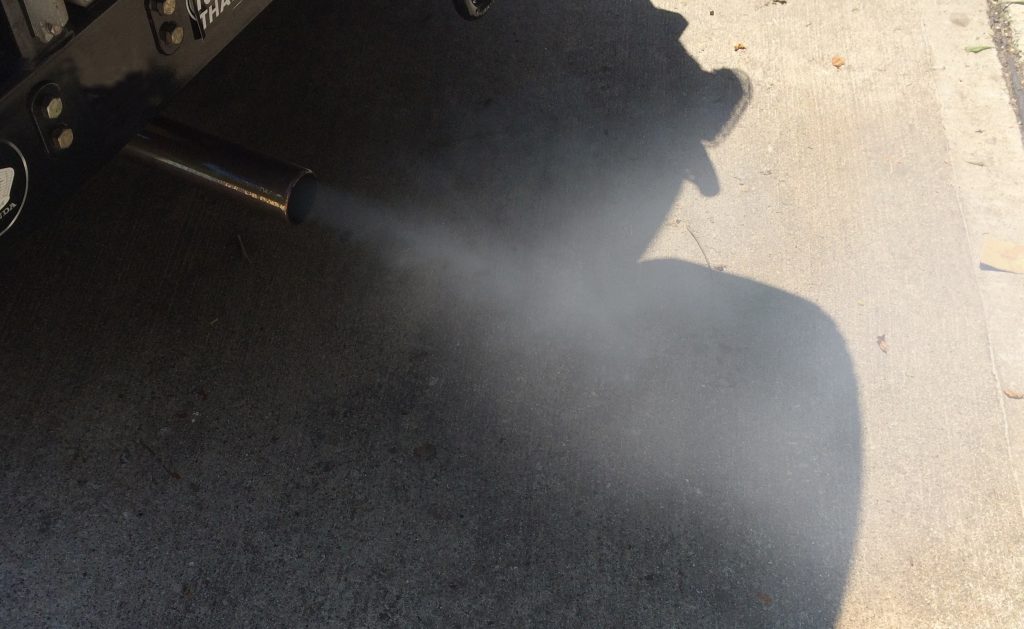Your dad probably taught you the importance of checking a vehicle’s oil level shortly after you got your first Big Wheel. And right around potty training, he probably also trained you to “change your oil every 3,000 miles.” It’s probably one of the first things you learned about car maintenance!
But what if the oil system starts to have issues?
Engine oil is responsible for braving extreme temperatures and high operating speeds to reduce friction and strain on critical engine parts and keep your entire engine running smoothly. Without an ample supply of oil coursing through its proverbial veins, your engine will be prone to poor performance, damage, and an untimely death.
Because oil is so crucial to your engine, you’ll want to get any oiling system problems figured out ASAP. The two most common complaints regarding an automotive oil system are:
- Engine consumes too much oil
- The oil pressure gauge indicates low oil pressure
We’ll tackle these two issues, along with their most likely root causes here.
Excessive Oil Consumption
Constantly adding oil to your vehicle? Your engine is likely losing oil either by A) burning oil, or B) leaking oil.
Burning Oil
If you’ve been noticing bluish smoke coming from your vehicle, this is often a telltale sign that your engine is burning oil. Most likely, it comes down to one of two things:
Engine Wear
As your engine parts age and wear, oil consumption increases.
If you notice deposits on your spark plugs, valves, piston rings, and/or pistons, that likely means oil is getting into your combustion chamber and burning. This is likely the result of worn parts or improper clearances. For example, worn bearings may throw more oil on the cylinder walls. If these walls are worn or tapered in any way, it prevents the piston oil control rings from sealing and scraping off excess oil, which then seeps into the combustion chamber. Worn intake valve guides can also allow oil into the combustion chamber.
As a rule of thumb, if your vehicle produces smoke under acceleration, it’s likely the result of poor sealing piston rights or imperfect cylinder walls. This can be confirmed by performing a compression test. If oil is leaking around your piston rings, you may have to replace the rings or have the cylinder walls bored to eliminate inconsistencies.
If it produces more smoke during deceleration, you may be dealing with a valve guide issue. You can reduce oil losses by replacing or upgrading these parts. For example, new valve guides, valves with oversized stems, and installation of valve stem oil seals can restore proper sealing. Valve guides can also be knurled and reamed to restore clearances.
Engine Speed
High engine speed is another cause of burning oil.
In this scenario, the high engine speed produces higher operating temperatures, which lowers the oil viscosity. This thinner oil is more easily able to get past the piston oil control rings and into the combustion chambers. In addition, higher engine speeds can cause the oil control rings to flutter, allowing oil into the combustion chambers.
In this case, a higher viscosity motor oil may be the way to go.
Leaking Oil
If you’ve got a puddle underneath your vehicle, well–you don’t need to be a genius to know there’s a leak somewhere. Oil leaks are probably the most common complaint related to oiling systems.
Sometimes, the cure is as simple as tightening down a loose valve cover or oil pan bolt. Other times, you’ll need to replace a worn or poor sealing gasket—valve cover, oil pan, or otherwise. If the leak is the result of a cracked block or internal engine problems, you could be looking at repairs that are costly, time-consuming—or both.
If you can’t track down the source of the oil leak just by looking, you can add dye to your oil and then shine an ultraviolet light into your engine bay to locate the source.
Low Oil Pressure
Is your oil pressure light on?
Is your gauge indicating low oil pressure?
There is always a chance your gauge is faulty. You can swap out the oil pressure sending unit or install a pressure gauge and then re-check for a normal reading. Most likely, low pressure is caused by one of these things:
- A worn oil pump
- A weak or broken relief valve spring
- Ineffective oil pump pickup (either fell off or was pushed up by a bent oil pan)
- A broken or cracked oil line
- An obstruction in the oil line (excessive sealant or sludge)
- Insufficient or thin oil
- Worn engine bearings
- Leaky oil filter or oil pressure sending unit
By focusing on these areas, you’re likely to find the culprit for low oil pressure.
And as always, check your oil level and change your motor oil regularly (just like dad said).


[…] last, follow this link to learn how to diagnose common problems with the oil […]
[…] the manufacturer’s specifications or if there is a problem with the float. It could be due to a faulty oil system or an engine that is overly gassed and devoid of air. This can also be caused by an inoperative […]